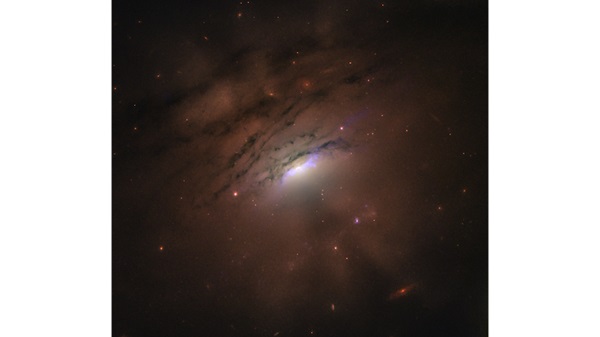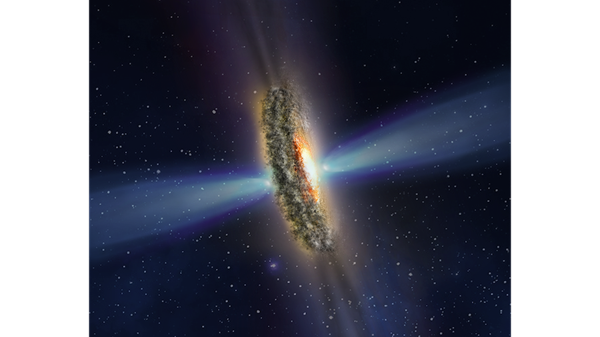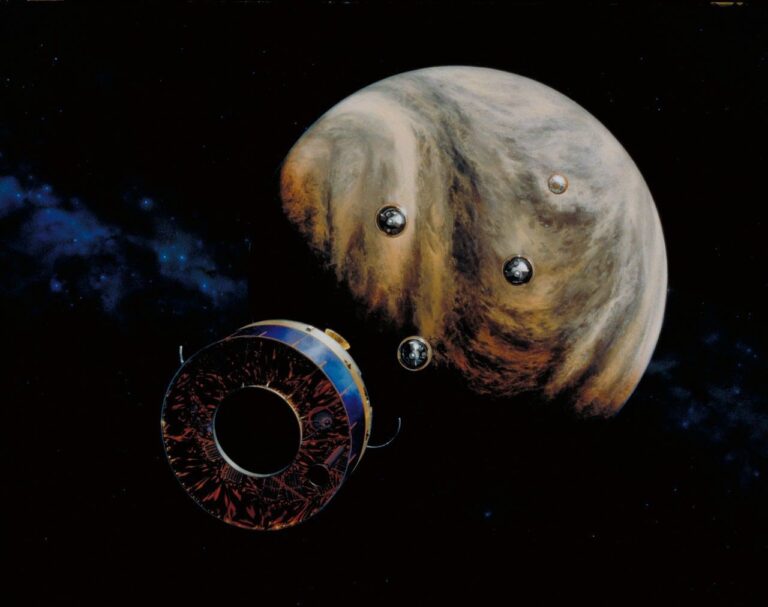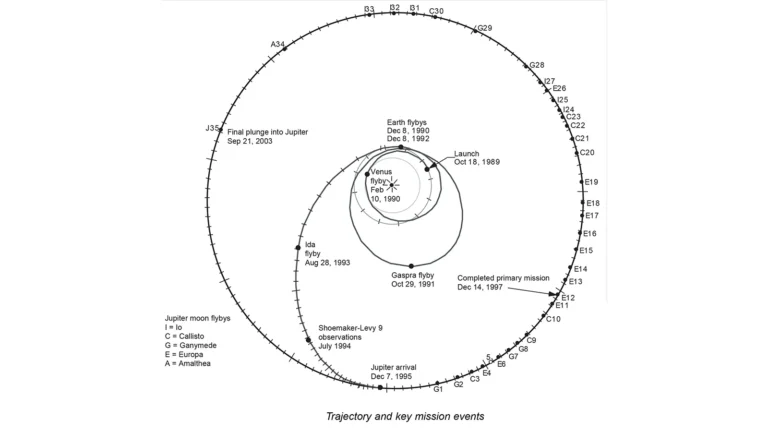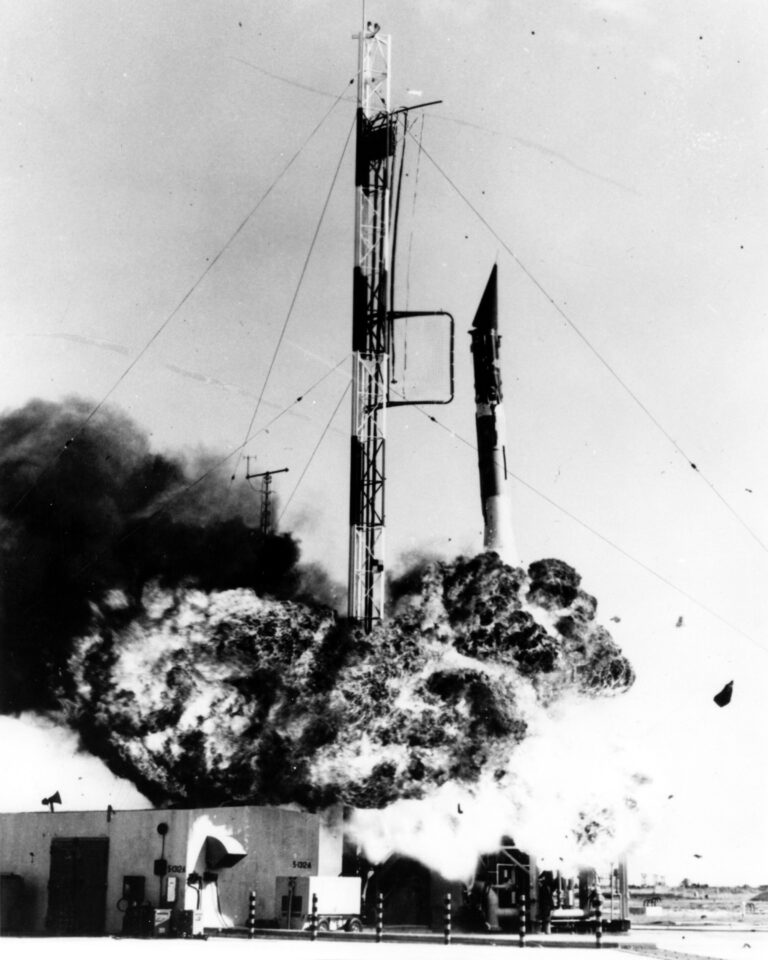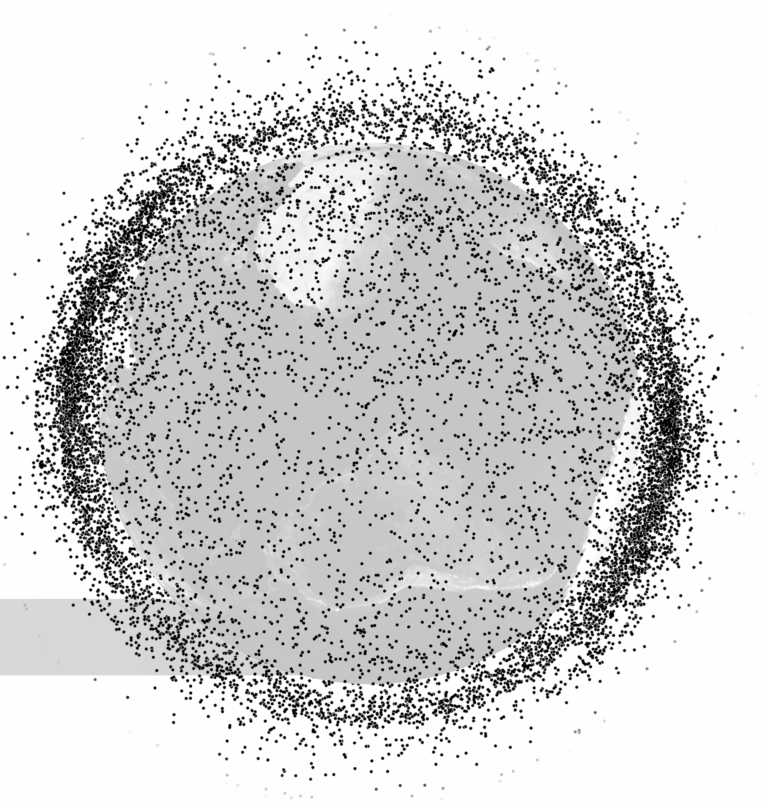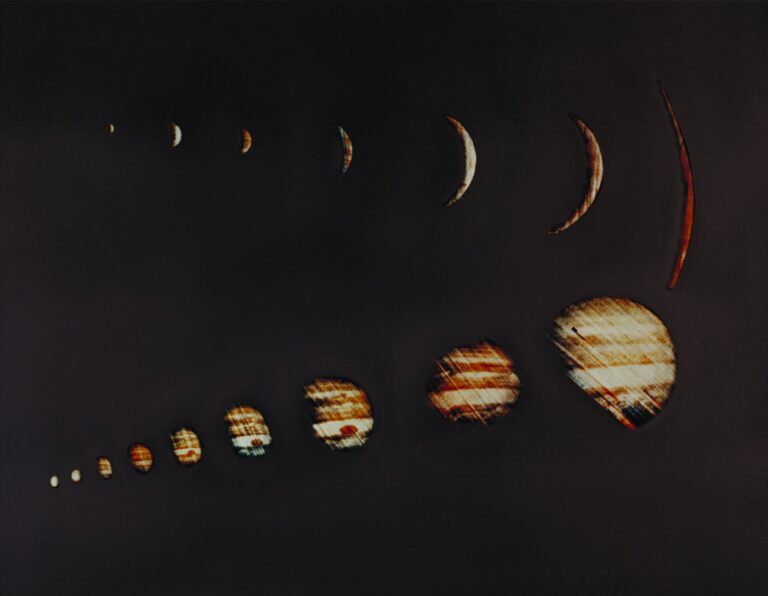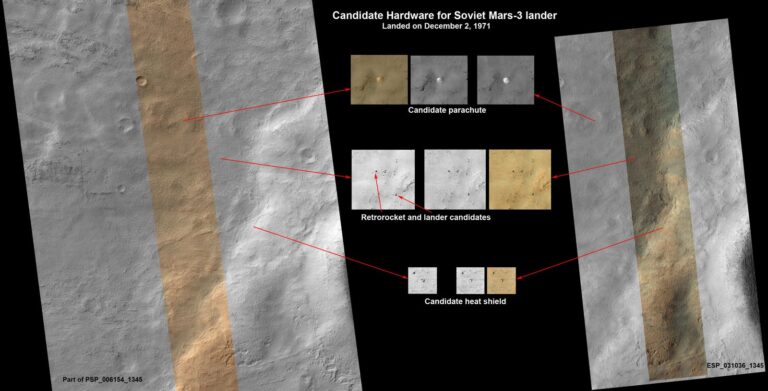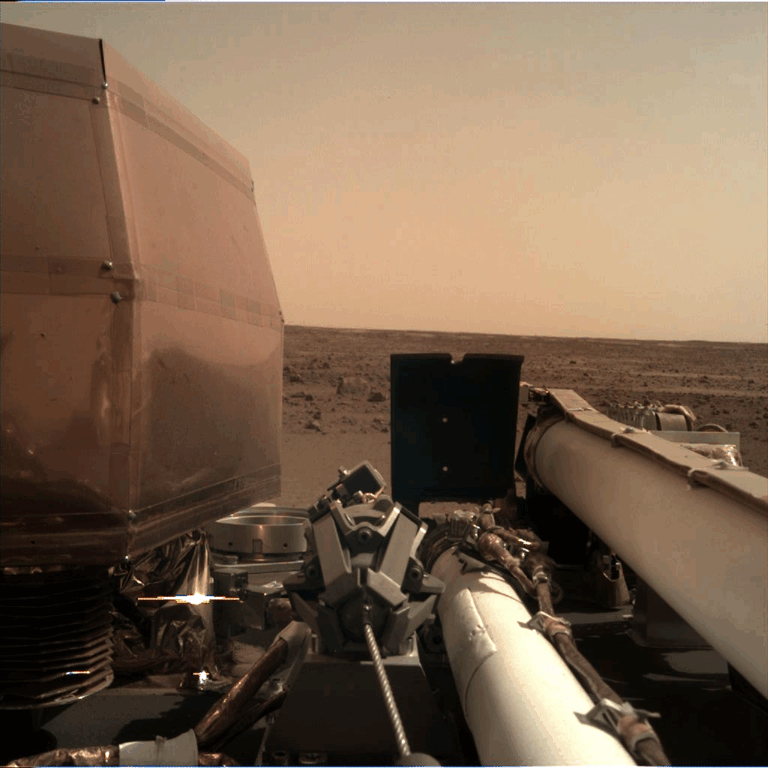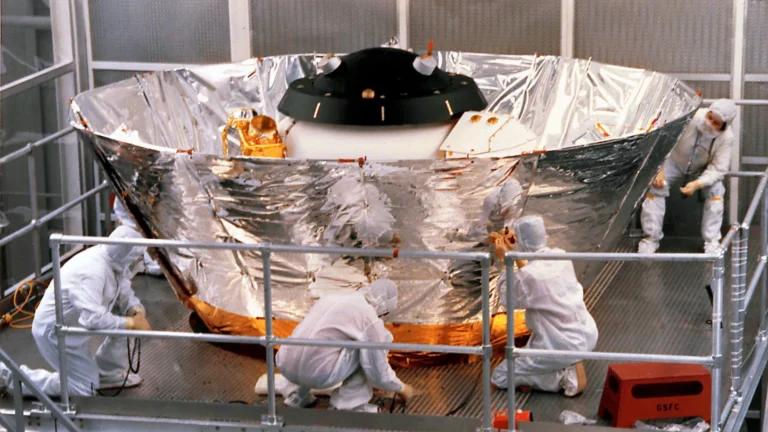Key Takeaways:
A team of researchers traced the rays and resulting shadows back to a supermassive black hole at the center of IC 5063. Because the blackhole is gobbling up nearby material at a rapid rate, its food piles up around it like too much water going down a small drain. This cosmic whirlpool causes the circling material to heat up and glow around the otherwise black hole. In their paper, published October 10 in The Astrophysical Journal Letters, the teams suggests that a donut-shaped ring (or torus) of dusty material is surrounding the black hole, continuously feeding it.
The light then hits dense patches in the dust ring, which casts shadows out into space. And thanks to the orientation of the black hole compared to its galaxy, the beams of light and the shadows are visible to us here on Earth.
“I’m most excited by the shadow of the torus idea because it’s a really cool effect that I don’t think we’ve seen before in images, although it has been hypothesized,” said lead author Peter Maksym of the Harvard-Smithsonian Center for Astrophysics in a statement. “Scientifically, it’s showing us something that is hard—usually impossible—to see directly. We know this phenomenon should happen, but in this case, we can see the effects throughout the galaxy. Knowing more about the geometry of the torus will have implications for anybody trying to understand the behavior of supermassive black holes and their environments.”

